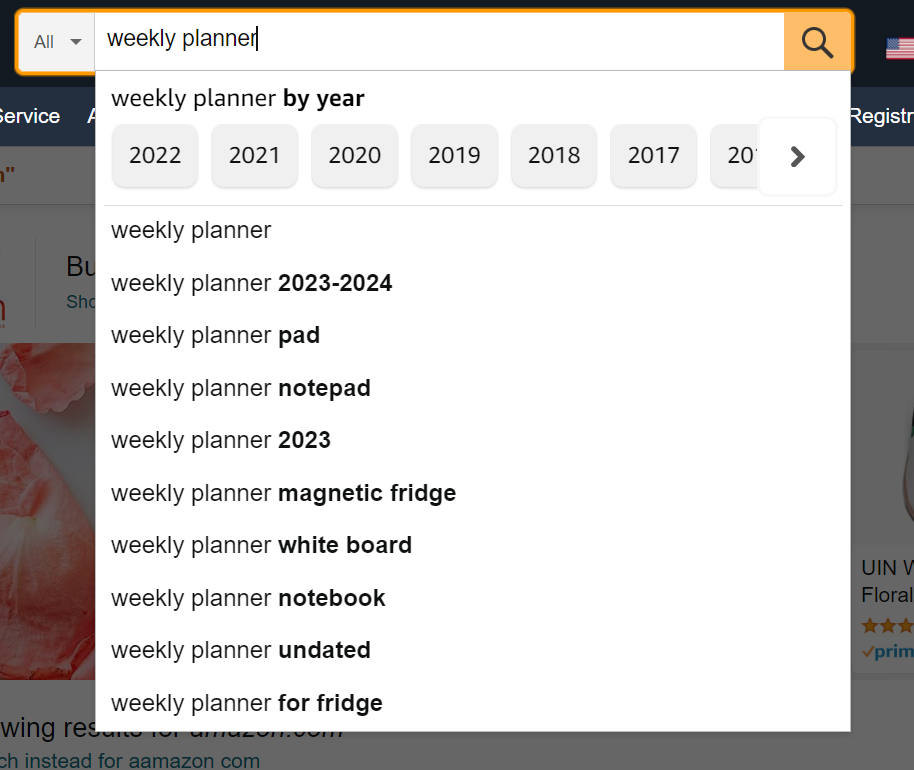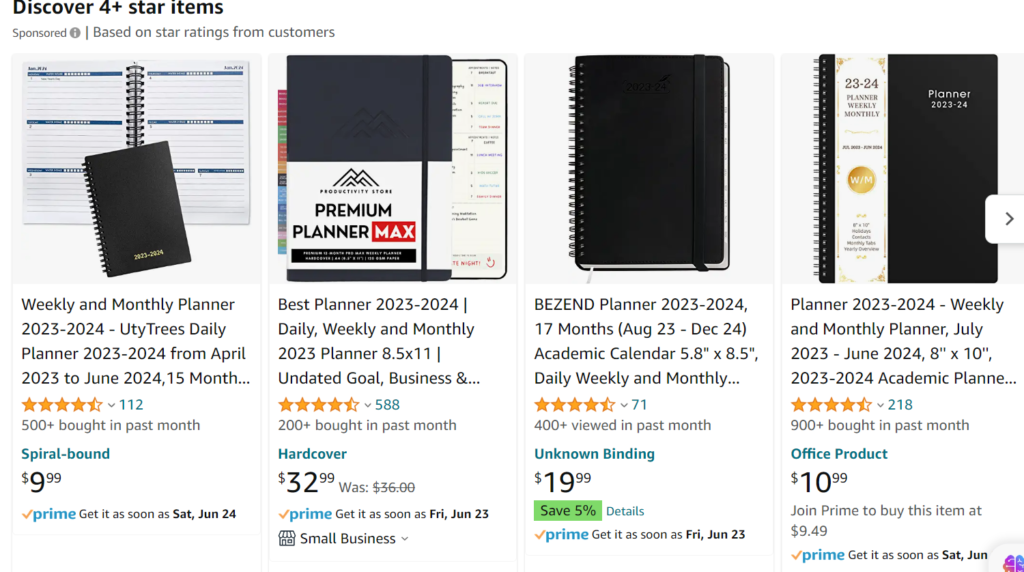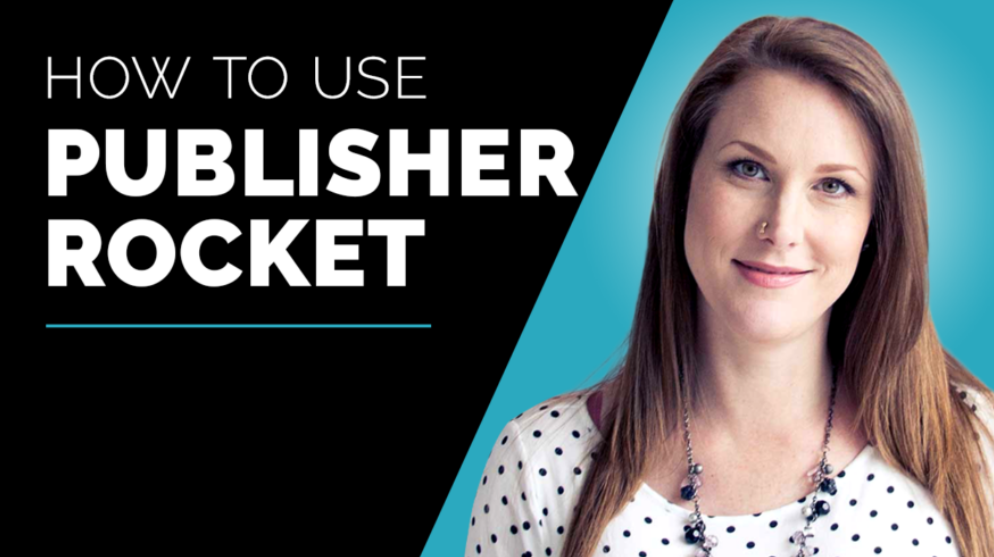If you’ve decided to dive into the lucrative world of self-publishing low-content (LC) books on Amazon, there’s one step you definitely cannot skip: research. If you decide to bypass this step and just “wing it,” you’re setting yourself up for a world of wasted time and disappointment.
Your aim should be simple: create a book that perfectly aligns with what people are already on the hunt for. The secret sauce for achieving this is book idea validation.
Done right, idea validation is like using a compass to guide your book creation process to ensure that your masterpiece lands in shoppers’ carts instead of falling into a bottomless pit of unsold books.
In this video I share my tried-and-true four-step process for validating your book ideas. You’ll learn how to:
- get creative with keywords
- break down and validate each keyword on your list
- use the power of keyword research tools to amp up your research game
You can watch the video or read on for the main points.
(This post contains affiliate links, which means—at zero cost to you—I will earn a small commission if you click through and make a purchase. Thank you for your support!)
Get Creative with Keywords
Kick things off by brainstorming a list of potential keywords that relate to your ideas. Keywords are those magical words or phrases that your potential readers would type into the Amazon search bar when they’re looking for a book just like yours. They’re your book’s little ambassadors that connect you with your audience.
Consider a daily planner, for example. Don’t just stop at “daily planner” as a potential keyword. Expand your horizons and think about other terms readers might search for. Perhaps “weekly planner” or “monthly planner” could be on their radar. Or maybe they’re looking for something a bit more formal like an “agenda.”
This exercise is all about immersing yourself in the mind of your potential buyer and predicting the terms they would use in their quest for a book like yours. The richer and more diverse your list of keywords, the broader the reach of your book and the better your chances of connecting with a wider audience.
Need a little help? Check out this tutorial where I show you how to find winning keywords using the power of AI.
Break Down Each Keyword
Once you have your keyword list it’s time to roll up your sleeves and dissect each keyword by asking these four key questions:
1. Is there a crowd looking for similar books?
To answer this, you’ll need to play detective. Get your first clue by typing your keyword into Amazon’s search bar. If the drop-down menu teases you with similar terms, it’s a pretty good hint that your book idea is resonating with what people are actively seeking.
Let’s imagine you’ve chosen “weekly planner” as one of your keywords. You type it into the search bar, and Amazon starts suggesting terms like “weekly planner with notes,” “weekly planner for students,” or “undated weekly planner.” What does this tell you? There’s a crowd out there that’s not just interested in weekly planners, but they’re looking for specific types, too!
This means your book idea—your unique take on a weekly planner—could potentially tap into this existing demand. In essence, each related term that pops up is like a little cheering section, signaling that you’re on a path many are exploring. It’s an encouraging sign that your book could indeed find a welcoming audience.

2. Do books like yours already exist?
Once you’ve found that people are actively searching for books similar to your idea, it’s time to dig a little deeper. Dive into those search results. What do you see? Are there books out there that align closely with your concept?
If you find a pool of books echoing your idea, don’t let that dishearten you. It’s actually a positive sign—a big, flashing neon indicator that there’s a ready audience for your type of book. These existing books validate your concept and tell you that readers are interested in your topic.
If you find that people are searching for this type of book but there aren’t a lot of relevant matches, this could mean that you’ve stumbled upon an untapped niche—a potential goldmine. You may have just found a gap in the market you can seize and make your own.
Each scenario—adding your unique voice to an existing chorus or setting the stage in a quiet corner of the Amazon marketplace— has its own opportunities. Just remember, your unique take on the subject can bring fresh eyes and eager readers to your book.
3. Are these books selling like hotcakes?
Now we’re getting to the big question: are books similar to your idea selling well? Here’s where Amazon’s Best Sellers Rank (BSR) comes into play. This handy little metric displayed on each book’s page will help you determine whether readers are reaching into their pockets for books like yours.
Think of the BSR as a kind of popularity contest. The closer the BSR is to 1, the higher the book’s sales. If the BSR of the books in your search results is under 100,000, it’s time for a happy dance—your book idea has the potential to be a hit.
On the flip side, if the BSR is creeping above 250,000, you’re seeing caution flags. This could mean your book idea may not be as saleable as you’d hoped.
But here’s the rub. A high sales volume also signifies stiffer competition. It’s like trying to get noticed in a crowded room—not impossible, but certainly challenging. The key is finding the sweet spot where your book idea meets a substantial demand but the competition isn’t quite so fierce.

4. How tough is the competition?
This last question has to do with sizing up your competition. It involves a careful examination of the existing books that pop up in your search results, scrutinizing design quality and diving deep into the reviews.
Look at the books that come up. Are they sleek, professional, and appealing or do they look hastily thrown together and lack a quality finish? This gives you an insight into the standard you need to meet or exceed to stay competitive.
Next, turn your magnifying glass towards the reviews. A sea of 5-star reviews indicates that these books are hitting the mark with readers. It’s a sign of a tough fight ahead, but don’t let that intimidate you. It also means that readers are willing to pay for high-quality content in this genre or topic.

On the other hand, poor reviews or a lack of reviews suggest there’s room for improvement in the market. This could be your opportunity to swoop in and captivate the audience with your book.
Finally, in the light of this investigation, ask yourself the golden question: “Can I bring something new and enticing to the table that allows me to stand out from the competition?”
Remember, even in a crowded market there’s always space for fresh and unique perspectives. Your task in this validation step is to figure out if you have that unique twist that can set your book apart.
Validate Each Keyword on Your List
After you’ve conducted your book detective work, it’s time to take stock of your findings. You’ve put each keyword under the microscope and now it’s decision time. Do some of these keywords offer promising insights? Are they hinting at a ready market that’s ripe for your book idea?
If so, congratulations! You’ve got the green light to proceed with your idea. Those keywords are your little green flags, waving you forward towards creating a book that’s likely to resonate with a hungry audience.
But what if your investigation doesn’t quite paint a rosy picture? Perhaps the signs aren’t so positive and the idea seems less promising than you originally thought. Well, don’t let this dampen your spirits. The beautiful thing about creativity is that there’s always another idea waiting to be explored.
In this case, it’s time to come up with a new concept, so dust off that notepad and head back to the drawing board. Remember, every step in this journey brings you closer to discovering that golden book idea that connects with readers and makes your self-publishing adventure a rewarding one.
Take Advantage of the Power of Research Tools
After taking a deep dive into manual validation, it’s time to bring in the big guns: research tools.
While not 100% necessary (you can do all of your research manually), these little helpers can not only save precious time but can also provide you with information to help you amplify your book’s visibility, potentially leading to an uptick in sales.
For budget-conscious authors, free keyword research tools like Self Publishing Titans Chrome Extensions, AMZ Suggestion Expander, and DS Amazon Quick View can be a boon. They provide a wealth of data. And the best part…they don’t cost a penny! You can learn more about these free research tools in these videos: KDP Power Tools: 2 Free Keyword Research Tools from Self Publishing Titans and Best Free Tools for Low-Content Publishing.
For those willing to invest a bit more, there’s Publisher Rocket, a brilliant tool that offers a comprehensive list of related keywords, estimates searches per month, provides average monthly earnings for each keyword, and serves up an array of category information to boost your book’s discoverability.
Personally, I’m a fan of Publisher Rocket because it saves me a ton of time and frees up space for me to focus on the book creation process (the really fun part!). Adding research tools to your arsenal can be a game-changer in your book idea validation journey. You can check out a video of how I use Publisher Rocket for my own keyword research here.

Diving straight into creating a book and bypassing the validation process can be very tempting but remember, skipping the validation is a bit like setting off on a journey without a map—you might eventually reach your destination but it could take a lot longer and be far more frustrating than if you had a clear route. Validation is your roadmap in the world of self-publishing, guiding you toward the book ideas that have a real chance of success.
By using this four-step process to validate your low-content book idea, you’re setting the stage for a successful book launch and a rewarding self-publishing journey. Ready to validate your next book idea? You’ve got this!
If you want to learn how to publish other types of low-content books like journals and planners, download my free guide, 3 Steps to Publishing Your First Low-Content Book in Less Than a Day.
For additional help join my free Facebook Group, Low-Content Profits.
